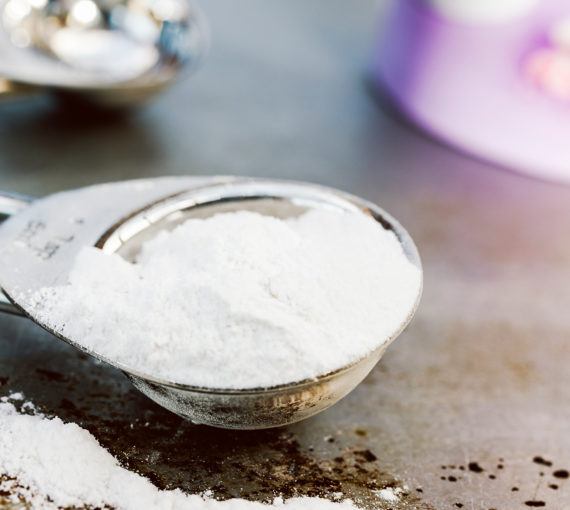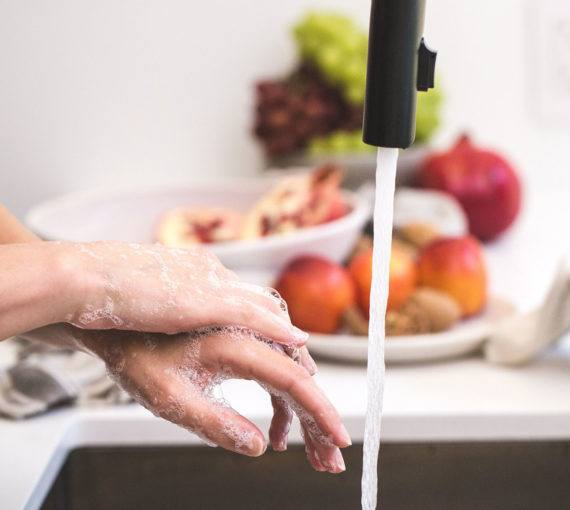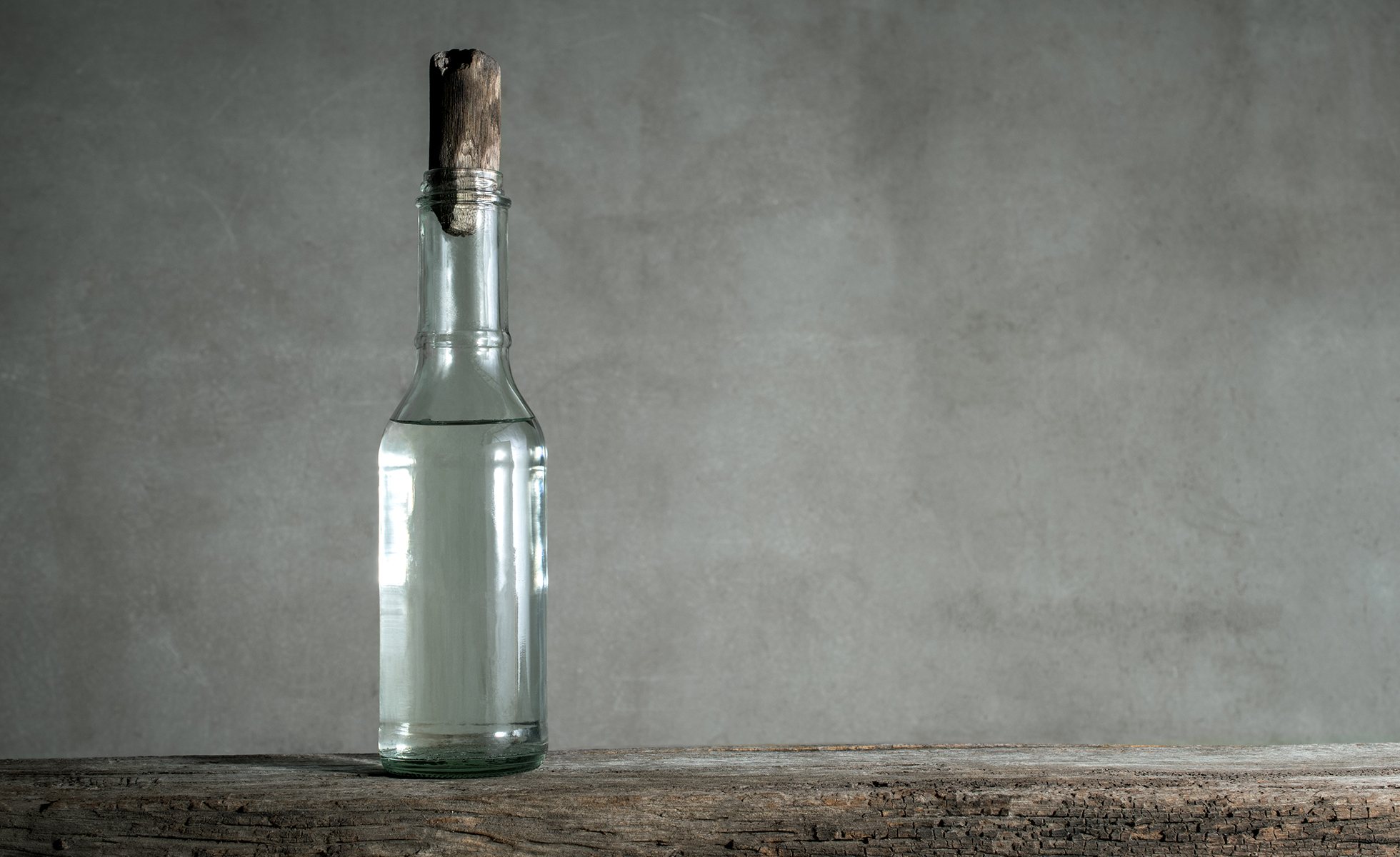
Distilled white vinegar is the one most often used in cleaning, for its antibacterial properties. It also acts as a deodorizer and cuts grease.
Acetic acid (a.k.a. white vinegar) can act as a disinfectant that can destroy some bacteria and viruses.
Studies confirming vinegar’s antibacterial properties:
- Household natural sanitizers like lemon juice and vinegar reduced the number of pathogens to undetectable levels.
- Vinegar can inhibit growth of and kill some food-borne pathogenic bacteria. Plus, vinegar’s bactericidal activity increased with heat! (Salt helped too.) “The combined use of vinegar and sodium chloride, with use of an appropriate treatment temperature, was found to be markedly effective for the prevention of bacterial food poisoning.”
- Household disinfectants — vinegar and baking soda used on their own — were highly effective against potential bacterial pathogens but less effective than commercial household disinfectants.
Note: These ingredients are useful at home. But if you’re operating a food business, the National Collaborating Centre for Environmental Health states, “Products such as tea tree oil, baking soda, vinegar, electrolyzed water, microfibre cloths, ozone, and silver compounds are not registered disinfectants for food premises, according to the Health Canada definition.”
Vinegar and COVID-19
Although vinegar has disinfectant properties, there’s no scientific evidence or studies that show vinegar kills a virus like COVID-19.
Health Canada and the U.S. Centers for Disease Control and Prevention provide ways to clean and disinfect for COVID-19. Check recommendations from your regional public health agency.
What’s vinegar?
The word “vinegar” comes from the French “vin aigre,” which means “sour wine.” It’s been traced as far back as 5000 BCE. Legend has it that a bottle of wine was forgotten in storage for several months, causing it to ferment and turn sour. Its oldest uses include for cooking and as a medicine, a preservative and a drink to boost strength and promote wellness.
Vinegar is created through a two-step fermentation process that combines acetic acid and water. First, yeast feed on the sugar or starch of any liquid from fruits, whole grains, potatoes or rice. The liquid ferments into alcohol. The alcohol must then be exposed to oxygen and acetic acid bacteria (Acetobacter) to ferment over the course of weeks or months to create the end result — vinegar.
Distilled white vinegar is the one most often used in cleaning, for its antibacterial properties. It’s made from feeding oxygen to a vodka-like grain alcohol, causing bacteria to grow and acetic acid to form.
Where to buy cleaning vinegar?
White vinegar found on most store shelves is a five per cent concentration of acetic acid. Look for stronger concentrations (seven to 12 per cent) at eco-friendly stores with refill stations. Some brands label the stronger stuff “cleaning vinegar.”
Seven ways to clean with vinegar
Clean cutting boards
Pour vinegar onto a rag to clean a wood (or plastic) cutting board. (Eco-friendly oxygen bleach is even more effective.)
Deodorize toilet bowls
Pour 125 millilitres of white vinegar in to deodorize toilet bowls. Let sit 15 minutes. Flush.
Clean appliances and polish furniture
Remove hard water deposits
Remove hard water deposits on your tub/glass shower doors. Heat 250 millilitres of white vinegar in a pot. Spray onto surface. Let sit 15 minutes and wipe clean.
Unclog drains
Try this simple home remedy with food-grade ingredients.
Remove rust from tools
Soak rusty tools in a pail of white vinegar and brush to clean.
Clean glass and mirrors
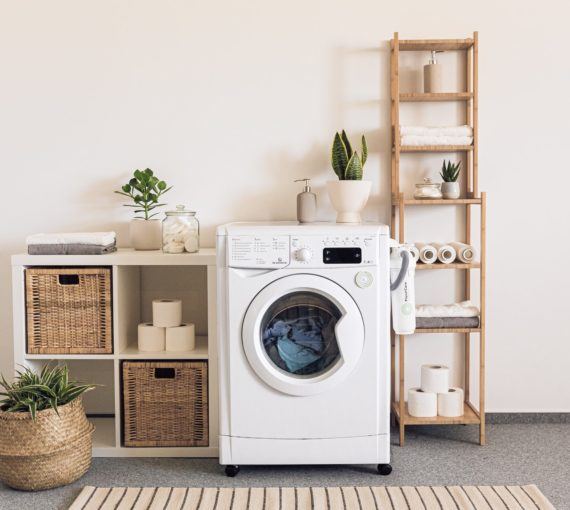
Tip!
Don’t use vinegar on natural stone, waxed wood, cast iron or aluminum. It’s also problematic for rubber dishwasher or washing machine components (check manuals).
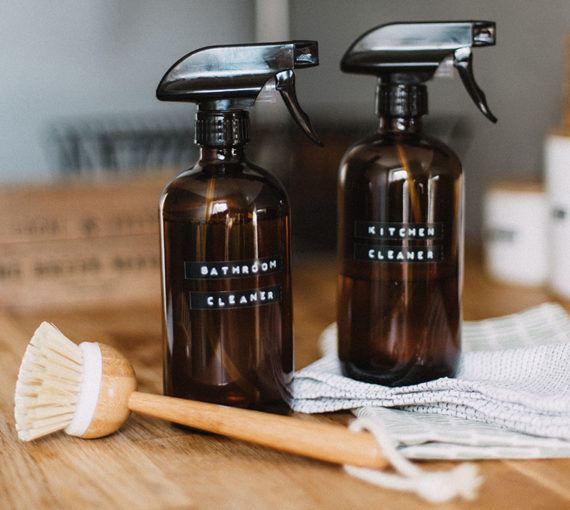
Tip!
Combat household grime and dirt by making your own all-purpose cleaners, dish soap and laundry soap. Check out the benefits of cleaning with eco-friendly oxygen bleach. And shop smarter for home cleaners.
Avoid this common DIY mistake
Mixing an acid (e.g., vinegar) with a base (e.g., castile soap) creates a (not dangerous) acid-base neutralization reaction. So adding vinegar to castile soap takes back its original oils. Looks like white curdling!
Instead, after using cleaners that contain castile soap, spray surfaces — counters, tubs, tile and sinks — with vinegar. Use vinegar full strength for tough cleaning jobs or dilute 50:50 with water.


